I have always been curious about the taste of okra. This green vegetable is a staple in Southern cuisine and is used in various dishes, such as gumbo and fried okra.
But what does okra taste like? In this article, I will explore the taste profile of okra and provide information on its texture, varieties, culinary uses, and health benefits.

Okra, also known as ladyfingers, is a flowering plant that is cultivated for its edible seed pods. The taste of okra is mild and slightly grassy.
Its flavor can be enhanced by cooking it at a low temperature over a long period of time. However, the real magic of okra comes from its texture, which is mucilaginous and great for thickening dishes like gumbo.
Okra is a versatile vegetable that can be used in various cuisines and cooking techniques. It is also rich in fiber and protein, and low in calories.
Whether you are a fan of okra or trying it for the first time, understanding its taste profile and culinary uses can help you appreciate this unique vegetable.
Key Takeaways
- Okra has a mild and slightly grassy taste, with a mucilaginous texture that is great for thickening dishes like gumbo.
- Okra is a versatile vegetable that can be used in various cuisines and cooking techniques.
- Okra is rich in fiber and protein, and low in calories, making it a healthy addition to any diet.
Understanding Okra
As someone who has tasted okra before, I can confidently say that it has a very mild, subtly grassy flavor. Okra is an edible vegetable that belongs to the mallow family.
It is also known as Abelmoschus esculentus and is native to Ethiopia. Okra was brought to North America by enslaved people and settlers when they arrived centuries ago.
Okra is a seed pod that is filled with tiny white seeds and is sometimes called lady’s fingers due to its long, slender, tubelike shape. It has a peach-like fuzz on the exterior and a mild, somewhat grassy taste. Okra is commonly used in soups, canning, frying, roasting, or boiling.
One thing to note about okra is that it has a slimy texture that takes some getting used to. The sliminess is due to the mucilage or gel-like substance that is released when the okra is cooked.
Some people love this texture, while others find it off-putting. If you’re not a fan of the sliminess, you can try cooking okra with acidic ingredients like tomatoes or lemon juice, which can help to reduce the sliminess.
Overall, okra is a versatile vegetable that can be cooked in a variety of ways. It is a great vehicle for other bold flavors and doesn’t tend to overwhelm other ingredients that it is paired with.
If you’re looking for a new vegetable to try, I would definitely recommend giving okra a chance.
The Taste Profile of Okra
As someone who has tasted okra before, I can confidently say that it has a unique taste profile. The taste of okra can be described as mild and subtly grassy, with earthy and nutty notes.
It has a slightly sweet taste that is not overpowering and doesn’t tend to overwhelm other ingredients that it is paired with.
The taste of okra is greatly influenced by how it is cooked. If it is cooked for too long, it can become slimy and have a rubbery texture, which can affect its taste.
However, if it is cooked properly, it has a pleasant, crunchy texture that complements its taste.
One of the reasons why some people don’t like the taste of okra is because of its slightly unpleasant flavor. This flavor is more noticeable when okra is not cooked properly or when it is overcooked.
However, if you cook it low and slow for a long time, you can deepen and enhance its flavor.
Overall, the taste of okra is an acquired taste that not everyone enjoys. However, if you’re open to trying new things and appreciate unique flavors, you might find that okra is a delicious and nutritious addition to your meals.
Texture of Okra
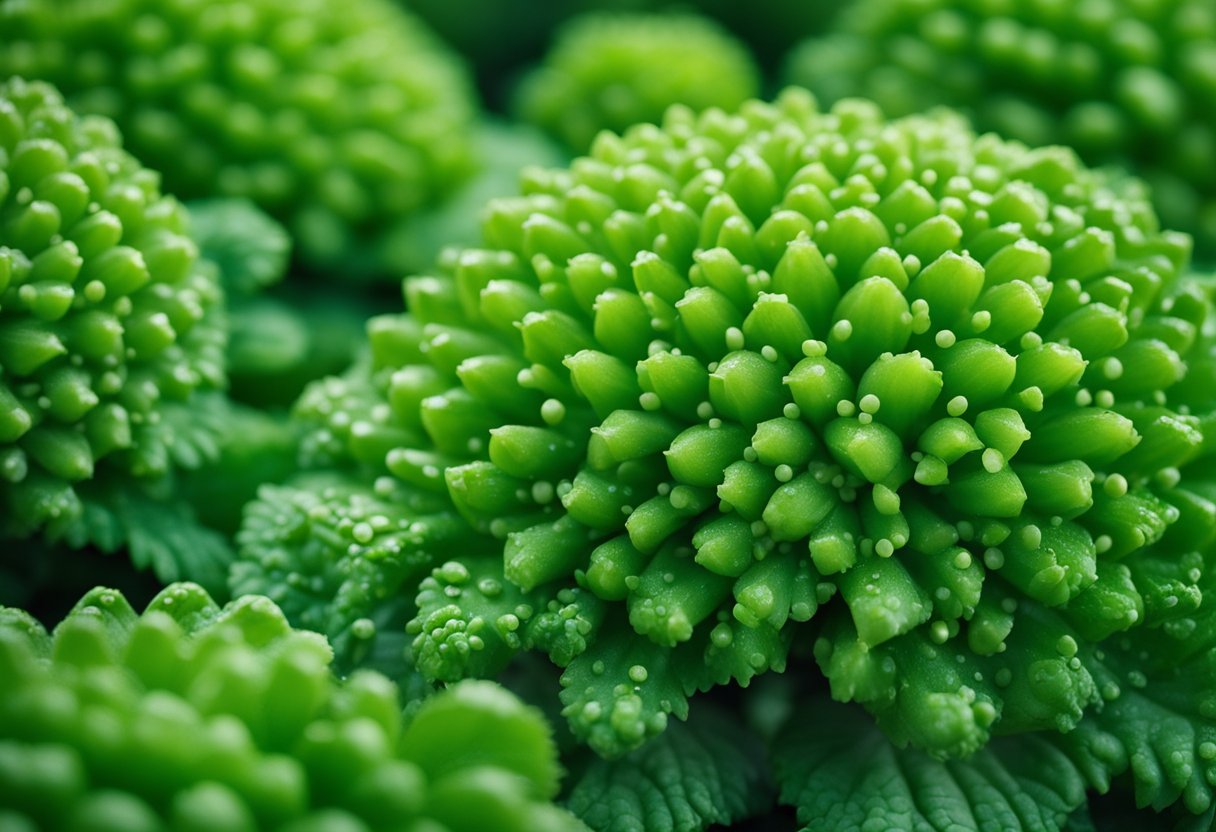
As an avid cook, I find that the texture of a food is just as important as its taste. When it comes to okra, its texture can be described as slimy or mucilaginous.
This texture is due to the presence of a soluble fiber called mucilage, which is released when okra is cooked.
While some people may find this texture unappetizing, others enjoy it. In fact, the sliminess of okra is what makes it a popular ingredient in dishes like gumbo, where it is used as a natural thickener.
When selecting okra, it’s important to choose pods that are firm and not too mature. Overly mature okra can be tough and fibrous, which can affect its texture when cooked.
If you’re not a fan of the slimy texture of okra, there are ways to reduce its sliminess. One method is to soak sliced okra in vinegar or lemon juice for a few minutes before cooking.
Another method is to cook okra at high heat, which can help to reduce its sliminess.
Overall, the texture of okra is unique and can take some getting used to. However, when cooked properly, it can add a delicious and interesting texture to a variety of dishes.
Varieties of Okra

I’ve tried many varieties of okra, and each one has its own unique flavor and texture. Some are best for frying, while others are perfect for stews and soups. Here are a few of my favorite okra varieties:
Red Okra
Red okra is a stunning variety with bright red pods that turn green when cooked. It has a slightly sweeter taste than green okra. Red okra is perfect for adding color to salads and stir-fries.
Green Okra
Green okra is the most common variety and has a bright green color. It has a mild, slightly grassy flavor and a slightly slimy texture when cooked. Green okra is great for thickening soups and stews.
Clemson Spineless
Clemson Spineless is a popular variety of okra that is easy to grow and produces large, tender pods. It has a mild flavor and is perfect for frying or grilling.
Cow Horn
Cow Horn okra is a unique variety with long, curved pods that resemble cow horns. It has a nutty flavor and a tender texture. Cow Horn okra is great for roasting or grilling.
Emerald
Emerald okra is a bright green variety with tender, flavorful pods. It has a slightly sweet taste and is perfect for salads and stir-fries.
Louisiana Green Velvet
Louisiana Green Velvet okra is a popular variety in the southern United States. It has a bright green color and a tender texture. Louisiana Green Velvet okra is great for frying or adding to gumbo.
Overall, there are many varieties of okra to choose from, each with its own unique flavor and texture. Whether you prefer red or green okra, or a tender or slimy texture, there is an okra variety out there for everyone.
Culinary Uses of Okra
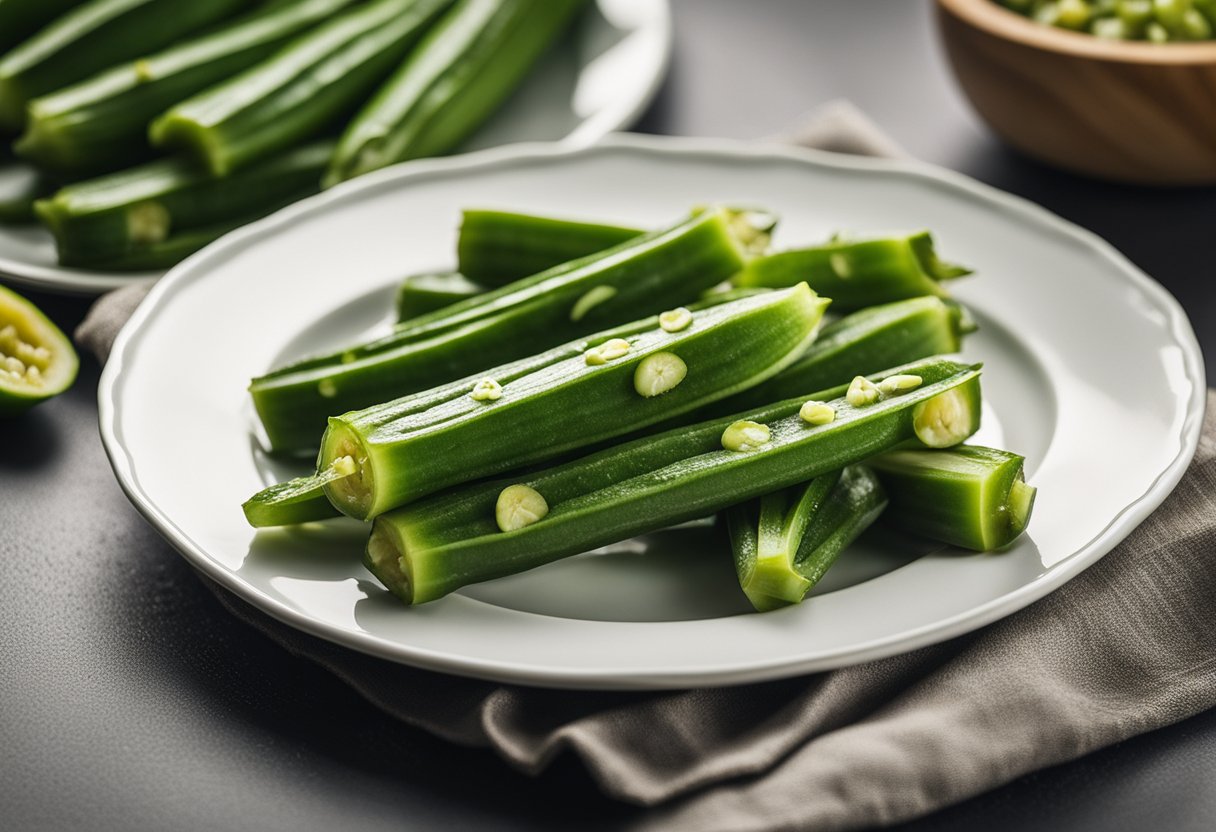
Okra is a versatile vegetable that can be used in a variety of dishes. It is a staple ingredient in Southern cuisine, particularly in stews and gumbos. Okra pods are also a great thickener for soups and stews due to their mucilaginous texture.
When it comes to cooking with fresh okra, there are several preparation methods to consider. Soaking sliced okra in vinegar or lemon juice for 30 minutes before cooking can help reduce the sliminess that some people find unappealing.
Okra can also be roasted in the oven or sautéed with other vegetables for a tasty side dish.
In addition to stews and soups, okra can also be used in salads. Sliced okra pairs well with tomatoes and a variety of other vegetables. When seasoning okra, consider using spices like cumin, paprika, and coriander to enhance its flavor.
Overall, okra is a versatile vegetable that can be used in a variety of dishes. Its unique texture and flavor make it a great addition to stews, soups, and salads.
With a little experimentation, you can discover new and exciting ways to incorporate okra into your cuisine.
Handling Fresh and Raw Okra
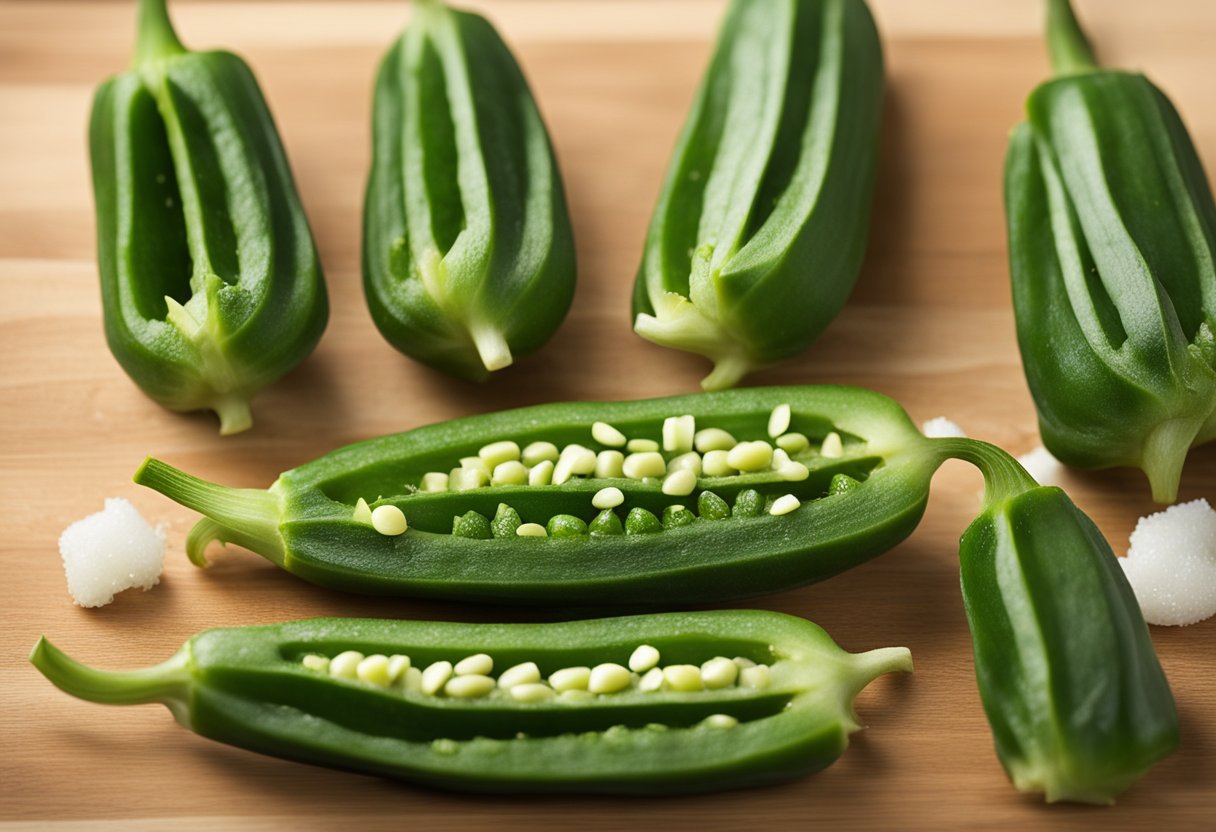
When it comes to fresh and raw okra, there are a few things to keep in mind to ensure that it stays fresh and flavorful. Here are some tips for handling fresh and raw okra:
Harvesting and Storing
If you are harvesting your own okra, it’s best to pick it when it’s young and tender, usually when it’s about 2-3 inches long. The larger the okra, the tougher and less flavorful it becomes.
Once you’ve harvested your okra, you can store it in a paper bag in the fridge for up to 3-4 days.
Freezing
If you have more okra than you can use within a few days, you can freeze it for later use. To freeze okra, start by washing and drying it thoroughly.
Then, slice it into small pieces and blanch it in boiling water for 3-4 minutes. Once blanched, drain the okra and let it cool completely before storing it in an airtight container in the freezer.
Using Raw Okra
If you’re using raw okra in a recipe, it’s important to wash and dry it thoroughly before slicing it. You can slice it into rounds or lengthwise, depending on the recipe.
Raw okra has a slightly slimy texture, which some people find off-putting. To reduce the sliminess, you can soak the sliced okra in vinegar or lemon juice for a few minutes before using it.
Conclusion
Fresh and raw okra can be a delicious addition to many dishes, but it’s important to handle it properly to ensure that it stays fresh and flavorful.
Whether you’re storing it in the fridge, freezing it for later use, or using it raw, these tips will help you get the most out of your okra.
Cooking Techniques for Okra
When it comes to cooking okra, there are many techniques to choose from. Here are some of my favorite methods:
Frying
Frying is a popular way to cook okra, and it’s easy to see why. The high heat helps to reduce the sliminess of the vegetable, and it gives it a crispy texture that’s hard to resist.
To fry okra, simply heat up some oil in a pan, slice the okra into rounds, and fry until golden brown.
Roasting
Roasting is another great way to cook okra. It’s a simple technique that brings out the natural sweetness of the vegetable. To roast okra, simply toss it with some olive oil, salt, and pepper, and roast it in the oven until tender.
Grilling
Grilling is a fun way to cook okra, and it’s perfect for summer barbecues. To grill okra, simply brush it with some oil, season it with salt and pepper, and grill it over high heat until charred and tender.
Sliced
Slicing okra is a great way to reduce its sliminess and make it easier to cook. Simply slice the okra into rounds, and use it in your favorite recipes.
Dry
Drying okra is a traditional way to preserve it for later use. To dry okra, simply slice it into rounds, and lay it out in a single layer on a baking sheet. Place the baking sheet in a warm, dry place, and let the okra dry out for a few days.
No matter how you choose to cook okra, it’s important to remember that it has a mild, slightly sweet flavor that pairs well with a variety of different seasonings and ingredients. So don’t be afraid to experiment and try new things!
Dealing with Okra’s Sliminess
As an okra lover, I understand that some people are turned off by its slimy texture. However, with a few simple techniques, you can reduce or eliminate okra’s sliminess and enjoy its unique flavor.
One of the main reasons why okra is slimy is because of its mucilage content. Mucilage is a type of soluble fiber that gives okra its gel-like texture.
To reduce the amount of mucilage, you can try soaking the okra in water for 30 minutes before cooking. This will help to release some of the mucilage and make the okra less slimy.
Another way to reduce sliminess is to add vinegar to the cooking process. The acid in vinegar helps to break down the mucilage and reduce its slimy texture.
You can add a tablespoon of vinegar to the cooking water or use it as a marinade before cooking.
Air and moisture can also contribute to okra’s sliminess. To prevent this, make sure that the okra is completely dry before cooking.
You can pat it dry with a paper towel or let it air dry for a few minutes. Additionally, cooking okra in a hot, dry environment can help to reduce its sliminess.
Finally, the climate in which okra is grown can also affect its sliminess. Okra grown in humid climates tends to be more slimy than okra grown in drier climates.
If you have access to different varieties of okra, try experimenting with different types to find one that is less slimy.
Overall, with a little bit of experimentation and some simple techniques, you can enjoy the unique flavor of okra without being put off by its slimy texture.
Okra in Different Cuisines
I love exploring different cuisines and trying out new dishes. Okra is a versatile vegetable that is used in various cuisines around the world. Here are some examples of how okra is used in different cuisines:
India
In India, okra is known as “bhindi” and is a popular vegetable in many households. It is used in various dishes such as bhindi masala, bhindi fry, and bhindi do pyaza. Okra is also a key ingredient in sambar, a lentil-based soup that is a staple in South Indian cuisine.
West Africa
Okra is a staple in West African cuisine, where it is used in dishes such as okra soup and jollof rice. In Ghana, it is known as “kontomire” and is often used in stews and soups.
Caribbean
Okra is a key ingredient in many Caribbean dishes such as gumbo, callaloo, and pepperpot. In Jamaica, it is often used in dishes such as ackee and saltfish, and curry goat.
Ethiopia
In Ethiopia, okra is known as “bamia” and is used in dishes such as “yataklete kilkil,” a vegetable stew that also includes potatoes, carrots, and green beans.
Egypt
In Egypt, okra is often used in a dish called “bamia bil lahme,” which is a stew made with okra, lamb, and tomatoes. It is also used in “molokhia,” a soup made with jute leaves.
Pakistan
In Pakistan, okra is known as “bhindi” and is used in dishes such as bhindi masala, bhindi fry, and aloo bhindi. It is also used in a popular dish called “bhindi gosht,” which is a curry made with okra and meat.
As you can see, okra is a versatile vegetable that is used in many different cuisines around the world. Its unique texture and flavor make it a popular ingredient in soups, stews, curries, and other dishes.
Health Benefits of Okra
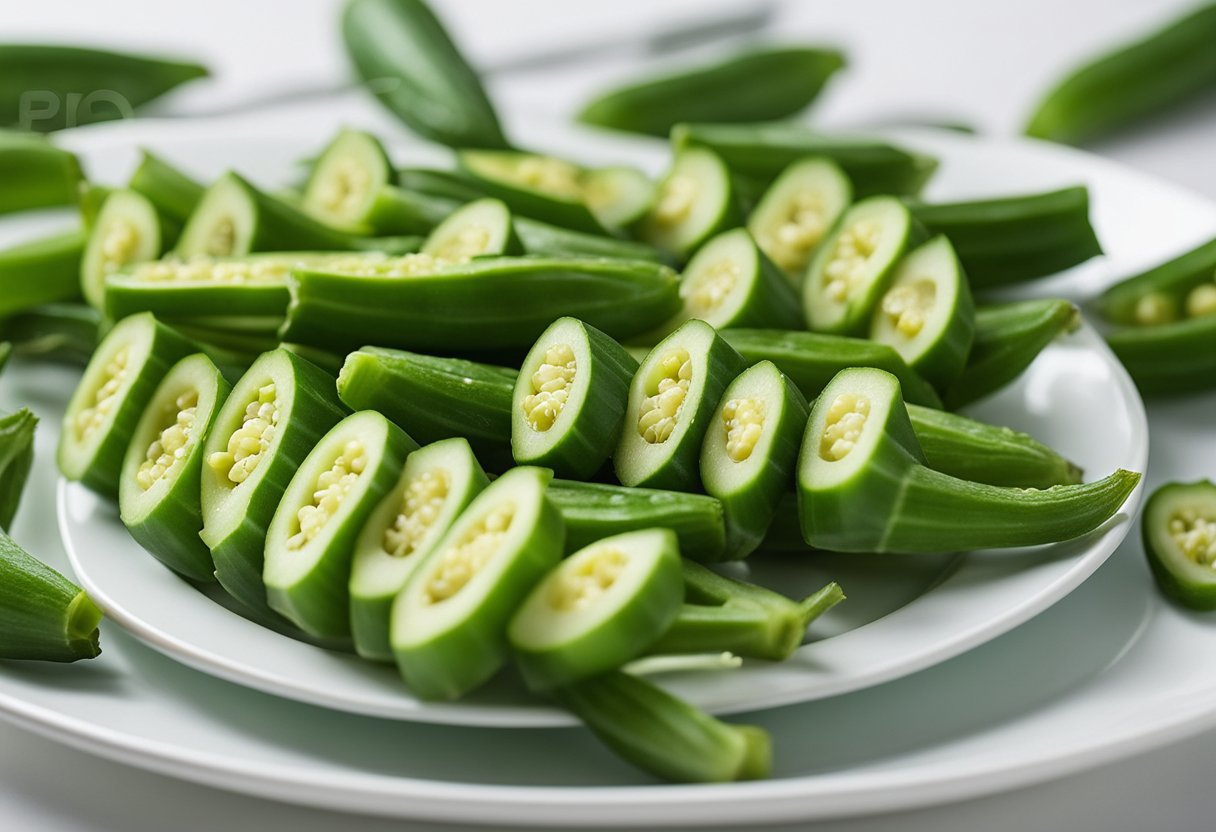
As someone who has tried and enjoyed okra, I can confidently say that it not only has a unique taste but also offers several health benefits. Here are a few reasons why you should consider adding okra to your diet:
High in Antioxidants
Okra is rich in antioxidants, which help to protect your body against damage from harmful molecules known as free radicals. These molecules can cause oxidative stress, which has been linked to chronic diseases such as cancer and heart disease.
Okra contains several antioxidants, including flavonoids and polyphenols, which can help to reduce oxidative stress and inflammation in the body.
Good Source of Fiber
Fiber is essential for proper digestion, and okra is an excellent source of both soluble and insoluble fiber. Soluble fiber helps to slow down the absorption of sugar in the body, which can help to prevent spikes in blood sugar levels.
Insoluble fiber adds bulk to stools and helps to keep the digestive system healthy and regular.
Rich in Vitamins and Minerals
Okra is also a good source of several vitamins and minerals, including vitamin C, vitamin K, folate, and potassium. Vitamin C is an important antioxidant that helps to support the immune system and promote healthy skin.
Vitamin K is essential for blood clotting and bone health, while folate is important for cell growth and development. Potassium helps to regulate blood pressure and supports heart health.
Contains Iron
Iron is an essential mineral that helps to transport oxygen throughout the body. Okra is a good source of iron, making it a great food to include in your diet if you are at risk of iron deficiency.
Supports Digestive Health
Okra contains a type of soluble fiber called mucilage, which helps to lubricate the digestive tract and promote healthy bowel movements. This can be especially helpful for people who struggle with constipation or other digestive issues.
Overall, okra is a nutritious and flavorful vegetable that offers several health benefits. Whether you enjoy it roasted, fried, or added to soups and stews, adding okra to your diet is a great way to support your overall health and well-being.
Special Preparations of Okra

When it comes to cooking okra, there are a variety of ways to prepare this vegetable to bring out its unique flavor and texture. Here are some special preparations of okra that you can try:
Pickled Okra
Pickled okra is a popular way to enjoy this vegetable. To make pickled okra, you will need to mix vinegar, water, salt, sugar, and spices in a pot and bring the mixture to a boil.
Once the mixture has boiled, you will need to add the okra and let it cook for a few minutes. After that, you can transfer the okra to jars and let it sit for a few days to allow the flavors to develop.
Fried Okra
Fried okra is another popular way to enjoy this vegetable. To make fried okra, you will need to slice the okra into thin rounds and coat them in a mixture of flour, cornmeal, and spices. After that, you can fry the okra in hot oil until it is crispy and golden brown.
Roasted Okra
Roasted okra is a healthier alternative to fried okra. To make roasted okra, you will need to slice the okra into thin rounds and toss them with olive oil, salt, and pepper. After that, you can roast the okra in the oven until it is tender and slightly browned.
Frozen Okra
Frozen okra is a convenient way to enjoy this vegetable year-round. To use frozen okra, you will need to thaw it first and then cook it according to your preferred method. Frozen okra can be used in a variety of dishes, including stews, soups, and gumbo.
Overall, there are many ways to prepare okra to bring out its unique flavor and texture. Whether you prefer pickled okra, fried okra, roasted okra, or frozen okra, there is a recipe out there that will suit your taste.
Preserving Okra
Preserving okra is a great way to ensure that you can enjoy this tasty vegetable all year round. Here are some ways to preserve okra:
Bagging Okra
One way to preserve okra is by bagging it. Simply wash the okra and let it dry completely. Then, place the okra in a plastic bag and seal it tightly. Store the bag in the refrigerator, and the okra should last for up to a week.
Freezing Okra
Freezing is another great way to preserve okra. First, wash the okra and cut it into bite-sized pieces. Then, blanch the okra in boiling water for 3-4 minutes. After blanching, place the okra in a bowl of ice water for a few minutes to stop the cooking process.
Drain the okra and place it in a freezer bag. Be sure to remove as much air as possible before sealing the bag. Frozen okra can last for up to six months.
Preventing Spoilage
To prevent spoilage, it’s important to store okra properly. Keep it in a cool, dry place, and avoid exposing it to direct sunlight or moisture. If you notice any signs of spoilage, such as mold or a slimy texture, discard the okra immediately.
Preserving okra is a simple and effective way to enjoy this delicious vegetable all year round. Whether you choose to bag or freeze your okra, be sure to store it properly to prevent spoilage.
Frequently Asked Questions
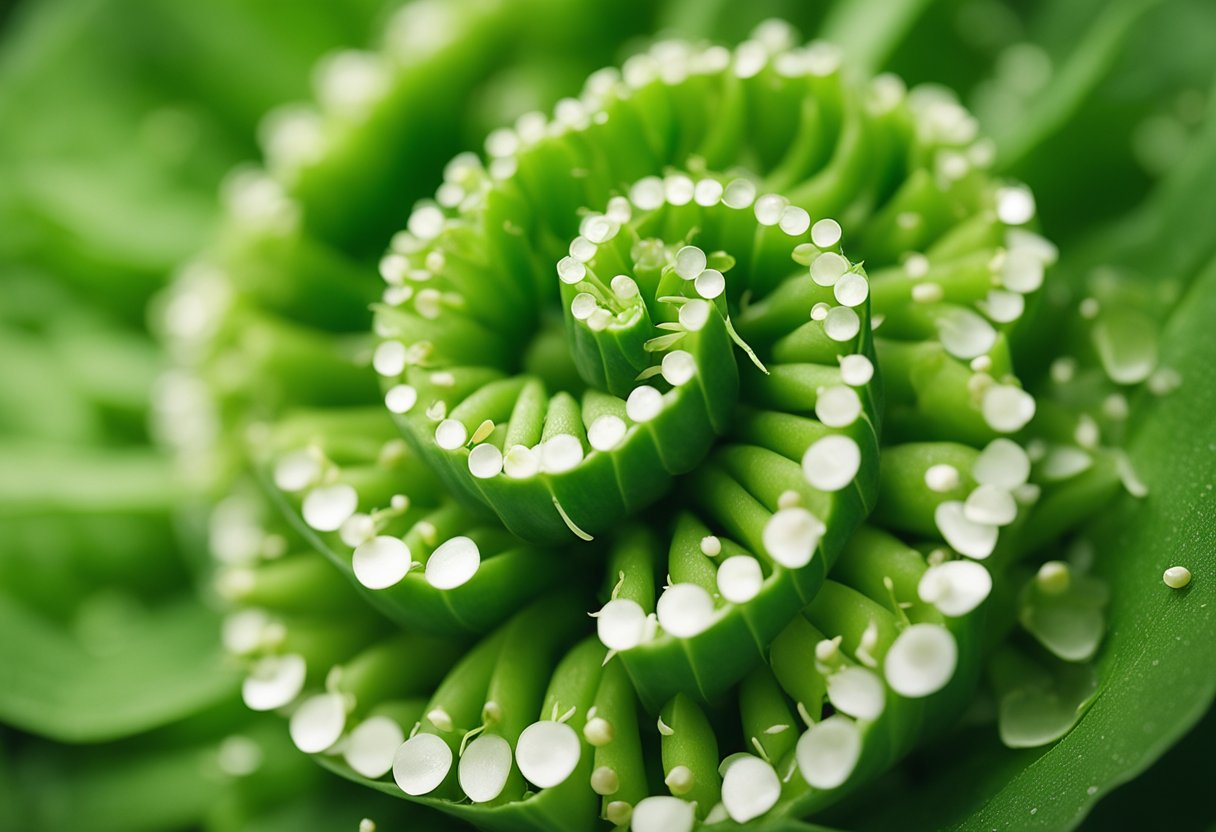
What are the health benefits of okra?
Okra is a nutritious vegetable that is rich in fiber, vitamin C, and folate. It is also a good source of antioxidants and has been shown to have anti-inflammatory properties. Some studies suggest that okra may help to lower cholesterol levels and improve digestion.
What are some common uses for okra?
Okra is a versatile vegetable that can be used in a variety of dishes. It is a staple ingredient in Southern and Creole cooking and is often used in gumbo, jambalaya, and other stews.
Okra can also be grilled, roasted, or sautéed and served as a side dish. It can be pickled or canned for later use.
What is the taste of okra water?
Okra water is made by soaking sliced okra pods in water overnight. The resulting liquid has a slightly slimy texture and a mild, grassy flavor.
Some people enjoy drinking okra water for its potential health benefits, while others find the texture unappealing.
What is the taste of fried okra?
Fried okra has a crispy exterior and a tender, slightly slimy interior. The breading adds a savory flavor and a satisfying crunch. Some people prefer fried okra to other preparations because the frying process helps to reduce the sliminess of the vegetable.
What is the taste of pickled okra?
Pickled okra has a tangy, slightly sour flavor that is similar to other pickled vegetables. The pickling process also helps to reduce the sliminess of the vegetable, making it a popular choice for those who don’t enjoy the texture of fresh okra.
What are some tips for cooking okra to avoid slime?
To reduce the sliminess of okra, it’s important to avoid overcooking it. Okra should be cooked quickly over high heat, either by grilling, roasting, or sautéing.
Adding acidic ingredients like tomatoes or vinegar can also help to reduce the sliminess of the vegetable. Finally, it’s important to avoid cutting okra into small pieces, as this can release more of the slimy juices.







